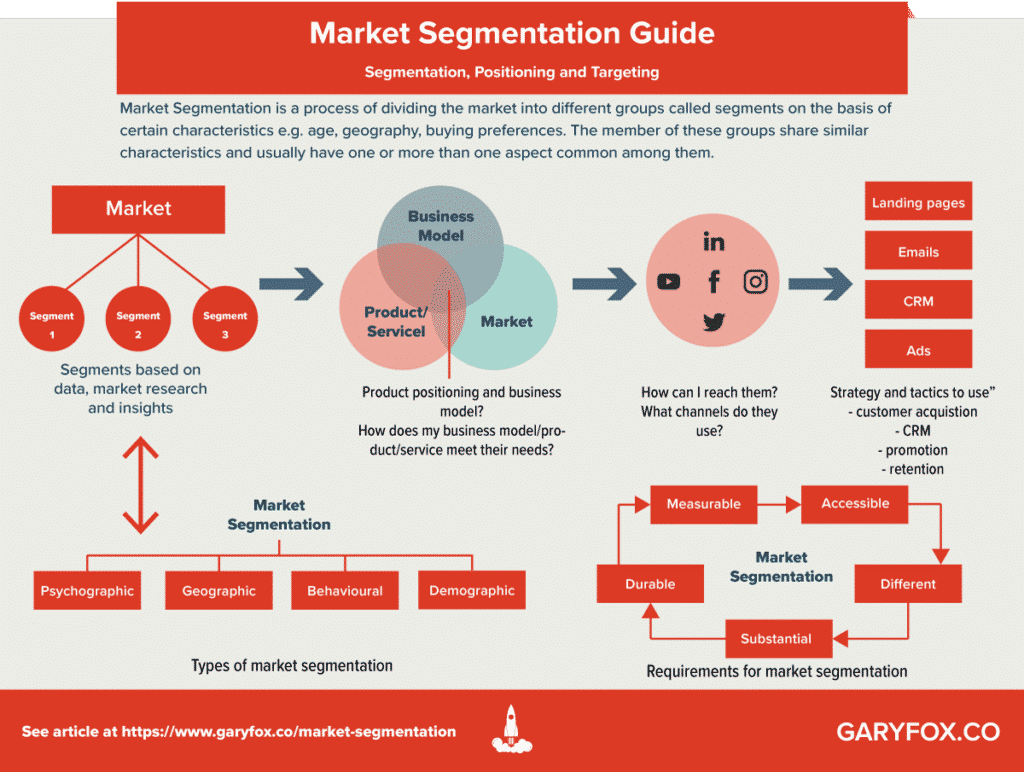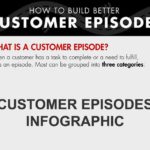Market segmentation is one of the most effective ways to grow your business.
If you simply treat all your customers the same then you are not optimizing your sales and marketing.
Even large SME’s often fail to dig into the different ways to segment markets.
As a result, competitors steal customers by creating more personalized offers and erode market share.
In marketing and consumer research, market-segmentation techniques have grown out of the fact that it is simply not effective, nor even feasible, for a marketer to try to influence everyone at once with the same message.
If you want to maximize revenue and profits then you need to get smart about segmenting your market.
Table of Contents
Personalization of Marketing
Market segmentation done well offers you the chance to develop more personalized marketing communications, offers and ultimately drive more sales.
Here some statistics on marketing personalization:
- 71% of best-in-class B2B content marketers match their content to meet their decision-makers’ needs.
- Personalization can reduce acquisition costs by as much as 50%. It also lifts revenues by 5–15% and increases marketing spend efficiency by 10–30%.
- 91% of consumers say they are more likely to shop with brands that provide offers and recommendations that are relevant to them. – Accenture.
- 80% of consumers are more likely to make a purchase from a brand that provides personalized experiences. – Epsilon.
- 72% of consumers say they only engage with personalized messaging. – SmarterHQ.
- 42% of consumers are annoyed when content isn’t personalized. – CMO by Adobe.
- 84% of consumers say being treated like a person, not a number, is very important to winning their business. – Salesforce.
- 70% of consumers say that a company understanding how they use products and services is very important to winning their business. – Salesforce.
- 80% of companies report seeing an uplift since implementing personalization. – Econsultancy.
- Companies using advanced personalization report a $20 return for every $1 spent. – Clickz.
- 95% of companies that saw 3x ROI from their personalization efforts increased profitability in the year after their personalization efforts. – Monetate.
How Powerful Is Segmentation?
Watch this video from the infamous Cambridge Anayltica.
You’ll begin to understand the power of big data, AI and segmentation/profiling techniques.
what are the 4 types of market segmentation
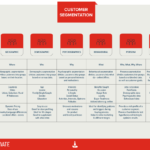
Market segmentation matches what you offer to customers that want to buy what you offer. They are 4 types of market segmentation: geographic segmentation, demographic segmentation, behavioral segmentation and psychographic segmentation.
It makes it easier to personalize marketing communications as well as develop products and services that meet the needs of the customer segment.
- Smart personalization engines used to recognize customer intent will enable digital businesses to increase their profits by up to 15% (Source: Gartner, 2016).
Some argue that market segmentation is outdated and there are more sophisticated ways to market to customers. Whilst that is true, there are new tools using AI to spot patterns, you still need to understand the basics and focus on identifying customer needs.
To create a group there needs to be a common set of characteristics that the people share e.g. age range, location where they live, lifestyle, interests…

What Is Market Segmentation?
Market Segmentation is a decision-making process that involves dividing a market of potential customers into smaller groups to improve what products it offers and how it communicates.
Definition of market segmentation
Market segmentation is a process that organizes customers into groups that can be researched and defined by their characteristics. Market research is used to gather demographic, psychographic and behavioural characteristics to identify common characteristics that allow a group to be defined.
Benefits of Market Segmentation
- Improve campaign performance. Market segmentation can help you to improve the performance of your marketing campaigns by helping you to target the right people with the right messaging at the right time.
- Informs product development. Market segmentation can also help you to develop products that better meet the needs of their customers.
- Identifies Areas to Expand. Market segmentation can also help you to identify audience segments that you are not currently serving.
- Improves Focus. Market segmentation also helps you to focus your efforts, which enables you to improve return on investment across your marketing spend.
- Informs Portfolio and Innovation Decisions. Market segmentation informs other important decisions regarding how you which product you invest in, divest and where you need to innovate.
Typically, market segmentation involves the full marketing planning process from strategy to marketing campaigns and communications.
The concept of market segmentation was coined by Wendell R. Smith who in his article “Product Differentiation and Market Segmentation as Alternative Marketing Strategies”.
Today market segmentation is more sophisticated and the tools you can use enable you to segment a market-based in more nuanced ways e.g. lifestyle choices, behavioural segmentation and occasions.
Market Segmentation Methods
To start the process you need to use data. Most companies use demographic data because it is easy and gives you an initial picture of who your customer is.
But demographic data doesn’t tell you much about why people buy. To. divide customers into groups that help you to improve conversions you need to get into why they buy.
That will make your marketing more relevant and contextual to them. Your segmentation then affects how brand campaigns, the images you use as well as the tone of voice and copy.
As an example, it’s no good sending out emails to people who don’t play football as a hobby if you’re selling personalized football kits for local teams.
Use a mix of data sources to develop a rounded view of the customer. In other words, you need to answer who they are and why they buy. Use customer personas then to represent each segment you create.
How Segmentation is changing

As marketers we are inundated with data from social media, search data…e.g. Google as well as many other sources such as Facebook.
Big data and analytics are now coming together to create new platforms that provide deep insights into customers.
Everything from how customers interact with your website/content to psychographic profiling and much more, now provide marketers with an incredible opportunity to improve ROI and the customer experience.
Some important considerations for reviewing a possible segment:
- trends vs segments – is it a trend or a viable segment that can be tracked over a long-term?
- value of spend – how much does this segment have to spend? e.g. budget-conscious, luxury, affluent…
- can you reach the audience through communication channels?
- do they have an identifiable need you can address – a problem you can solve?
- do you know what they currently buy and where?
- do you know their motivations – the reasons why they buy?
Requirements for Market Segmentation
- Measurable: do you have access to the necessary data sources to be able to track your segment and identify shifts in their behaviour. A good CRM system these days will allow you to use tag-based systems to identify behaviours as well as link those to other more substantive data like age (demographic data).
- Accessible: are you able to find communications channels that provide access to market to your segment. Sometimes this can be obvious and other times that can be harder to determine. As an example, if you are targeting butterfly collectors you might find it hard to find people unless you use specialist journals and groups across social media (or use hashtags…)
- Different: does a segment warrant being part of a separate group. Sometimes you can get too granular in your segmentation process. It’s important to remember that each time you create a new segment you increase the cost of your marketing. Why> Because done well, you start to change your strategies, tactics and marketing to maximise your conversions and profits. However, this increases the cost because you need different copy, images and communications.
- Substantial: Another consideration is whether a segment will actually be profitable for you. If you have a luxury product you might find that some segments are just not going to buy enough. It’s better to focus on the groups that generate profits. This in fact is a principle of the pareto ratio the 80:20 rule – the rule of thumb is that you earn 80% of your profits from 20% of your customer base. As a minimum, it is worth doing that analysis!
- Durable: Investing in a short trend, a spike in customer behaviour might be a tactic but not part of your long term strategy. Riding trends is important, but maintaining a focus on the core segments that deliver regular profit and building your customer relationships is important to long-term profits.
Types of Market Segmentation
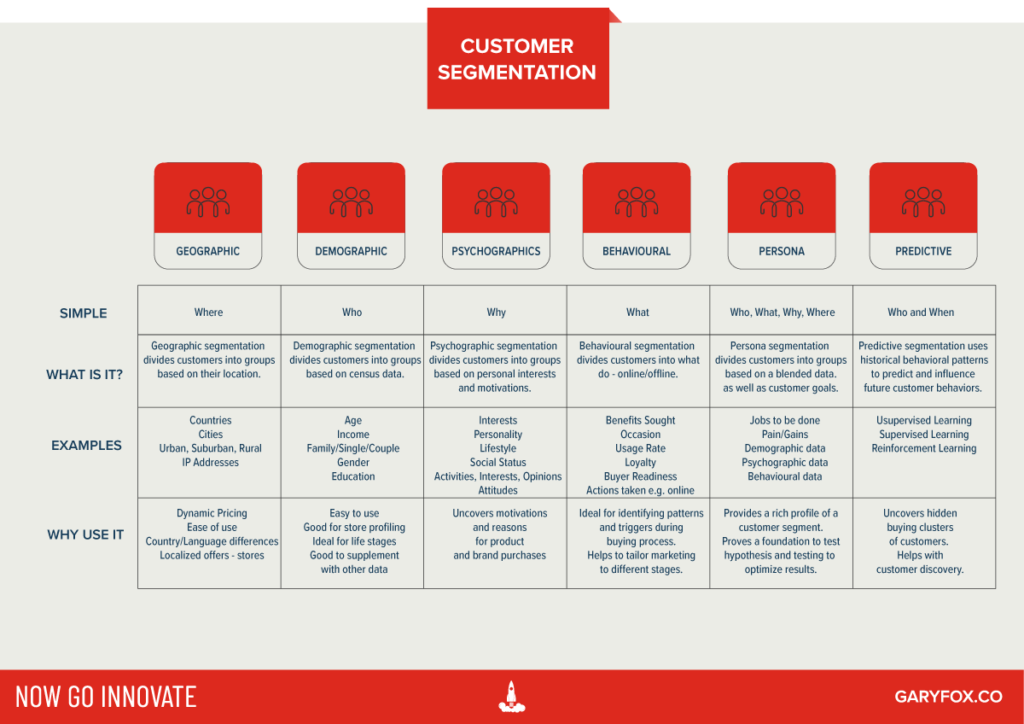
What is demographic segmentation?
Demographic segmentation divides markets using demographic variables like age, gender, marital status, family size, income, religion, race, occupation, nationality, etc.
This is one of the easiest ways to segment because of the availability of this type of data. Demographic segmentation is used as a start point in almost all industries. e.g. automobiles, beauty products, mobile phones, apparels, etc
What is geographic segmentation?
Geographic segmentation divides the market on the basis of geography. Often people in different regions have different requirements and may source and buy differently. Another simple reason is distribution. In other words, people often want to buy products locally or source them locally.
The dating industry, for instance, uses location as key way to segment and match people. The Uber business model is built on matching local drivers with people who need a ride.
People belonging to different regions may have different reasons to use the same product as well. Geographic segmentation helps marketer create relevant marketing campaigns for everyone.
What is behavioral segmentation?
This form of market segmentation is based on how customers behave, e.g. usage, preference, choices and decision making. Typically, you have segments like early adopters (based on technology adoption model – TAM), knowledge of the product and usage of the product.
- Those who know about the product.
- Those who don’t know about the product.
- Early-adopters.
- Ex-users.
- Potential users.
- Current Users.
- First time users, etc.
What is psychographic segmentation?
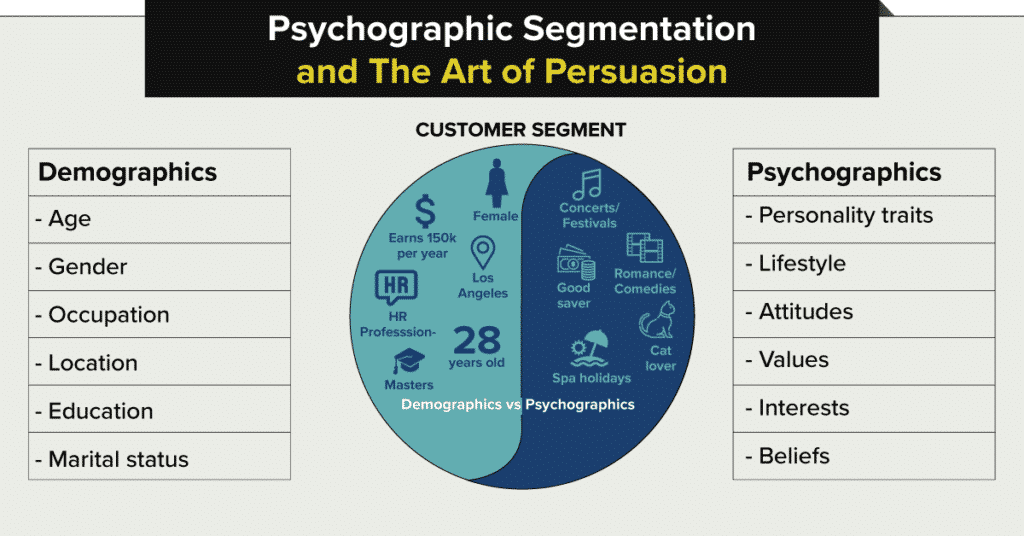
Psychographic segmentation divides the market on the basis of their personality, lifestyle and attitude. This segmentation process works when buying behaviour affects the decisions about the purchase of a product.
As an example, people who buy a holiday can be targeted on lifestyle choices, personality and attitude.
- Personality is a combination of characteristics that form an individual’s distinctive character and includes habits, traits, attitude, temperament, etc.
- Lifestyle is how a person lives his life.
The luxury market and targeting high-net-worth individuals is a good example. A person who has a high-net-worth will often live a luxury lifestyle and may consider buying only luxury cars e.g. Ferrari, Lamborghini…
B2B market segmentation
Segmentation equally applies to business to business environments. Often, the process of buying in B2B is more complex and involved understanding:
- how different stakeholders are involved in the buying process.
- their roles and responsibilities and level of purchasing authority.
- buying cycles e..g. how long they sign contracts for and alternatively, therefore, it is important to know when they end.
- if a business is buying locally for an office vs for the group.
- if the business is international vs regional vs local.
- the length of time from the start of the buying process to the end – decisions can take months for complex products. and services.
For these reasons, a B2B marketing strategy has to be able to understand the buyers and buying process first.
The four-level of market segmentation
The most common forms of segmentation that companies used to were the four levels proposed by Kotler:
- mass market
- segmented markets
- micro-markets (distinct from segmented markets)
- and individual markets
What is Mass Marketing?
Mass markets are mainly viewed with businesses such as Amazon, Walmart and general consumer goods. Fast-moving consumer goods such as pizzas, soap… sold through grocery stores would be an example of mass-market goods.
The marketing campaigns and communications tend to appeal to a broad audience. This, in fact, lowers the cost of marketing in terms of production e.g. one TV ad campaign but is high cost because of the need to reach a big audience and therefore use large channels such as TV.
What are segmented Markets?
A segmented market is divided using one or multiple types of segmentation approaches e.g. demographics, geographic, behavioral or psychographic.
This becomes a narrower and more focused approach compared to mass marketing.
What is Niche Marketing?
If you are going to focus on niche marketing you are aiming to target a small number of people that have common characteristics. These niche segments usually have quite different needs to a mass market.
Often this is referred to as underserved. As an example, a diabetic who needs a special diet might be a niche customer and under-served by Walmart. A nice company specializing in providing diabetic foods (and possibly other niche segments) could generate a profitable business.
What is one-to-one marketing
One-to-one marketing is the approach of personalizing interactions with customers. As digital technologies for CRM systems have become more sophisticated there are increasingly higher levels of personalization methods available.
Companies now like Nike and Levi’s even have radically transformed the supply change and production methods to be more modular. This has led to products being personalized by customers.

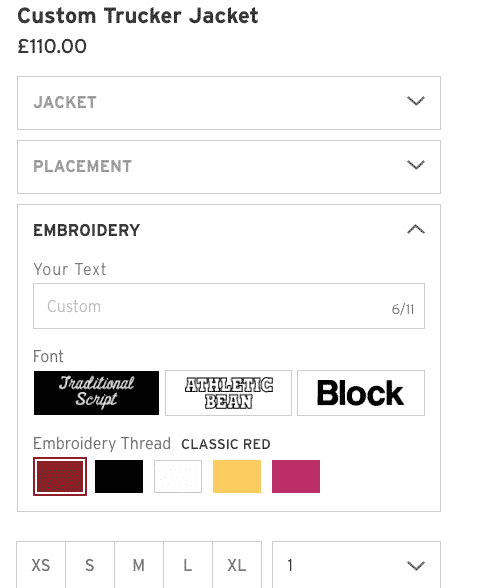
The art of market segmentation is to be relevant to your audience across the full 360 degrees of your marketing. You plan this by understanding the customer journey and then mapping your messages and branding to fit.
Segmentation, Targeting, And Positioning Framework
The core questions that relate to STP:
Where am I?
The first stage of the process involves assessing the market. In other words, where you intend to launch your product or service. Understanding the market is critical to understand how and what business model you will need to design. organization. How and what type of organizational design you need. How long it will take to acquire each customer. How much it will cost to acquire them…
Who is my key customer?
Understand your customer and place your customer at the heart of everything you do. Too many companies suffer from having departments that do not share the same common view of the customer and do not understand how and why customers are important.
Conduct market research to understand the potential customer and don’t treat is as a one-off exercise. You need to constantly experiment and learn about your customer.
Each time you learn about your customer you can improve your value proposition fits and how your product or service offers value to your customer.
Remember that Value = Benefits – Cost
What problem does your product solve?
If you want to learn more about the jobs to be done framework and how to understand customers and identify problems take a look at the value proposition canvas.
What Content Engages Them?
It is easy these days to find out what channels your customer uses, but the harder part is to spend time understanding what type of content they engage with and how that fits with the buying process.
How Do you Reach Customers?
The next step involves marketing to your customers. How do you reach them? What are the different channels and how do they fit the buyer persona or customer persona. Customer journey and experiences are designed at each stage by understanding how and why customers use each channel.
Market Types: The Four Types of Markets
Steve Blank developed this as a method to analyse some of the factors that affect new venture success.
Existing markets
The well-defined markets are dominated by a few key players.
Re-segmented markets
A market is dominated by a few companies leaves room for niche marketing and to develop value propositions to the under-served customer.
Clone markets
Clone markets are really replications of existing markets and customer segments. This model fuelled a lot of growth for Chinese companies when they replicated early versions of social media sites.
How to Get Better At Market Segmentation
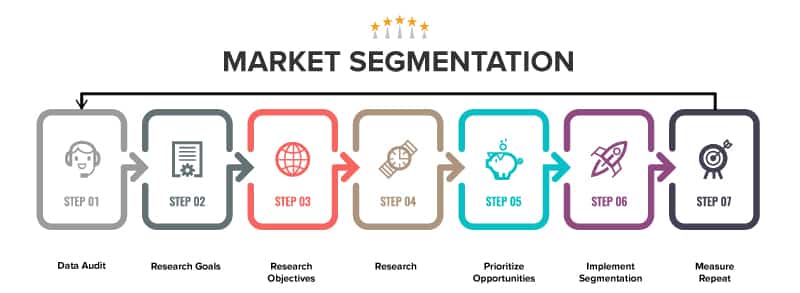
When designing and conducting segmentation it’s important to consider:
- how the market is structured.
- the facts about the market.
- the trends within the market.
- your perceptions of the category.
- how you act on those perceptions.
- what you need to learn about the market.
Things to avoid are relying solely on data. No amount of data that has not been cleaned into a set of algorithms alone will select the best model for you. This in fact is an example of worst practice.
Remember, market segmentation can dramatically improve your return on investment.
